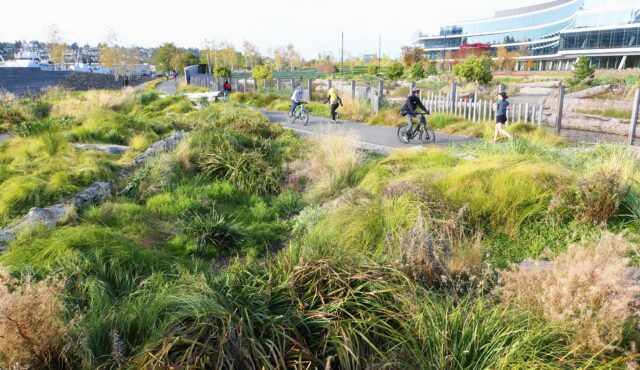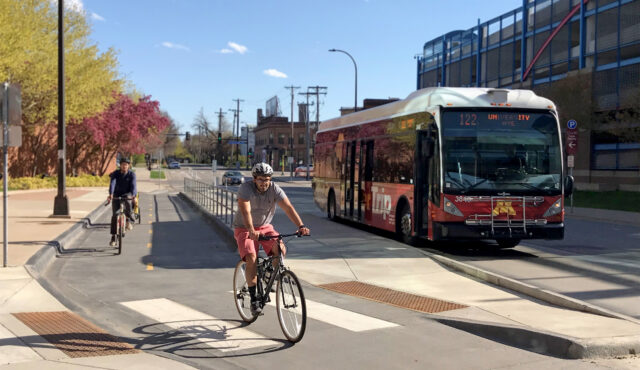Embracing path-as-place
By: Cindy Zerger, AICP, ASLA
August 20, 2015
This article was published in the Aug/Sept 2015 edition of Planning Magazine.
As an urban designer trained in both planning and landscape architecture, I have spent my career designing streets, parkways, and trails—the biggest parts of the public realm. I call these linear features “paths.” I chose this career a little selfishly. An avid runner, walker, and cyclist, I hoped to make my experiences in my own little slice of the world enjoyable and memorable.
As I get further into the profession, I am buoyed by what seems like a groundswell in fundamentally reframing how we plan and design our paths. Things are changing, but far too slowly. The slow shift is partly attributable to the inertia of the conventional transportation culture, which is rooted in the language we use to describe it.
For hundreds of years before automobiles became dominant, streets were multipurpose paths, a locus of tremendous social and economic exchange. Streets of every scale were places unto themselves; they contributed to a community’s identity. Yet, since the golden age of the automobile, the focus on street planning and design has been based on a narrow definition of mobility: moving people and goods from point A to point B as quickly as possible. We devised complex methods and models to evaluate how well automobiles do the job—and a supportive lexicon with terms like level of service, capacity, travel demand, and delay. These value-laden terms lowered the importance of “place” or ignored it entirely; community context was subordinated to the throughput for motorists. The intent was not malicious. But it came at a great cost to all those who experienced our paths outside of the automobile.
Now place-based approaches to street and roadway design are surging. The new focus revisits a centuries-old understanding that streets, trails, parkways, roads, and even highways should do more than just move things quickly from A to B. We can see the shift in the number of municipal, county, and state walkability plans funded and created in the last five years, and in the new terminology we use to describe what we want to experience, terms like complete streets, context sensitive design, shared spaces, and walkability. These are all antidotes to an auto-centric myopia.
Let’s keep reframing the conversation. Path-as-place is a term I developed and find useful in my own work. The phrase describes both an approach to designing “paths” and the result: when “paths” are considered places unto themselves. I define path-as-place as follows:
Path: a road, street, parkway, trail, path, highway (any linear feature for moving things)
as: through its design and composition is
Place: a defined area, location, or space within the built or natural environments.
Hence place is not relegated to sides of the paths. In recognizing context, topography, viewsheds, design, details, and material choices, we make paths places unto themselves. I think of the Grand Rounds Scenic Byway in Minneapolis, the Hudson River Greenway, U.S. Highway 93 through the Flathead Indian Reservation in Montana, or Plant Street in Winter Garden, Florida. All were designed with a path-as-place sensibility—and all are memorable.
Path-as-place is a concept that can help planners, allied professionals, and the public change how we talk about what our paths should be. I hope it helps us all shift the practice from moving automobiles to positively contributing to people’s experiences no matter their transportation mode, pace, or desire to linger.


